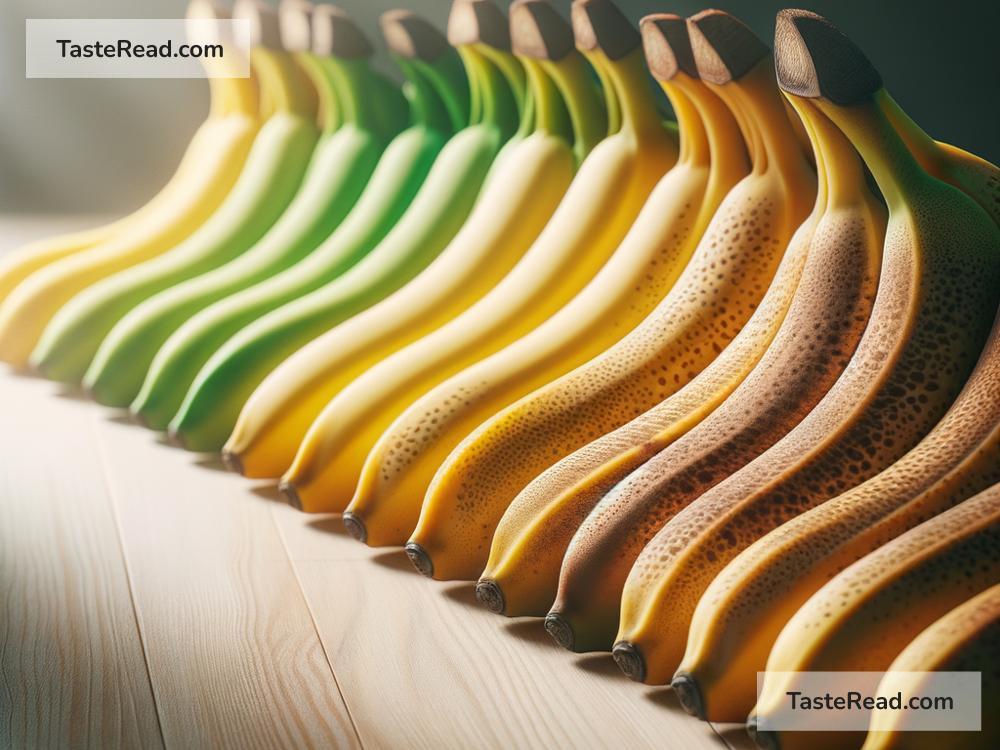The Surprising Science Behind Banana Ripening: Nature’s Magic Revealed
Have you ever wondered why bananas change color and flavor as they ripen? One day they’re green and firm, and just a few days later, they’re yellow, soft, and sweet. This transformation is no everyday coincidence—it’s actually the result of a fascinating scientific process happening inside the banana. Let’s explore the surprising science behind banana ripening, explained in simple terms that anyone can understand.
First, Why Do Bananas Ripen?
Bananas ripen as part of nature’s way of making them ready to eat. When bananas are still green, they contain a lot of starch. Starch is a type of carbohydrate that isn’t sweet—it’s more like the energy that fuels the growth of the fruit. Over time, the starch in bananas is converted into sugar, which is what makes ripe bananas taste sweeter. This transformation happens because of enzymes—tiny proteins inside the fruit that act like nature’s workers, breaking down starch into simpler, tastier sugars.
Ripening also changes the texture of the banana. When it’s green, the fruit is firm because the starch makes the cells inside tightly packed. But as the starch turns to sugar, the banana becomes softer, making it easier to bite into and enjoy.
Ethylene: The Ripening Trigger
The main chemical behind banana ripening is called ethylene. Ethylene is a gas that plants naturally produce, and it plays a big role in ripening fruits—not just bananas, but apples, pears, avocados, and more. Think of ethylene as the fruit’s way of saying, “Time to ripen!”
When bananas are picked from the plant, their ripening slows down because they’re no longer getting fresh signals from the plant to produce ethylene. But ethylene production doesn’t stop entirely. As bananas sit on your counter, they produce this gas, which speeds up the ripening process.
Interestingly, bananas are extra sensitive to ethylene. If you want to ripen your bananas faster, you can place them in a paper bag with another ripe fruit, like an apple or avocado. These fruits release ethylene gas, and the banana absorbs it, accelerating the ripening process. On the other hand, if you want to slow down ripening, keep bananas away from warm temperatures and ripe fruits or even refrigerate them.
Color Changes: The Yellow Transition
The most noticeable change during banana ripening is, of course, the color. Green bananas have high levels of chlorophyll, the same pigment that makes plants green. As bananas ripen, their chlorophyll breaks down, revealing the yellow color underneath.
This breakdown isn’t just cosmetic—it serves a purpose. Chlorophyll breaking down allows the banana to focus its energy on turning starch into sugars and getting softer, sweeter, and ready to eat.
Interestingly, the brown spots that often appear on very ripe bananas are a sign that the ripening process has gone a step further. These spots are caused by enzymes and natural chemical changes that occur as the fruit gets older. While some people prefer bananas without spots, very ripe bananas are sweeter and easier to digest.
The Role of Temperature in Ripening
Temperature can make a big difference in how quickly bananas ripen. Warm temperatures speed up the ripening process, while cooler temperatures slow it down. If you leave bananas on your counter in a warm kitchen, they’ll ripen faster than if you store them in a cooler area.
You’ve probably heard that refrigerating bananas can slow down ripening. While this is true, the cold temperature can also make the peel turn brown. This happens because the cold affects the pigments in the peel, but it doesn’t mean the banana has gone bad. Inside, the fruit is still sweet and delicious.
If you want bananas to stay fresh longer, refrigerate them once they’re ripe, not when they’re green. And if they look too brown, you can still use them to make banana bread or smoothies—they’re perfect for recipes because of their natural sweetness.
Can You Stop Bananas from Ripening?
Unfortunately, there’s no way to completely stop bananas from ripening—it’s a natural process that every piece of fruit goes through. However, there are tricks to slow it down. For example, you can wrap the stems of bananas with plastic wrap to reduce ethylene production and slow ripening. Keep bananas in a cool spot, away from direct sunlight or other ripe fruits.
If you want to ripen bananas faster, you can even place them in a warm oven for a few minutes. This heat speeds up the natural ripening enzymes, giving you sweet, soft bananas ready for recipes.
Bananas: A Natural Wonder
Bananas are not just tasty snacks—they’re a great example of how science works in everyday life. From the enzymes breaking down starch to the ethylene gas signaling them to ripen, bananas undergo a complex but fascinating process before reaching their peak flavor. Whether you like them green and firm or soft and speckled, bananas are an incredible fruit that offers both nutrition and a glimpse into nature’s chemistry.
So next time you grab a banana, take a moment to appreciate the surprising science behind its ripening. It’s a little slice of nature’s magic happening right in your hands!


